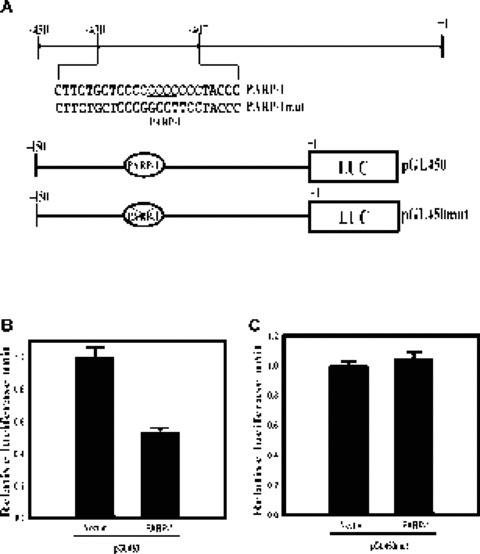Figure 5.

PARP-1 represses the proximal promoter of the mouse MOR gene. (A) Schematic representations of the mouse MOR proximal promoter region (the PARP-1 -binding motif is underlined), the pGL450 (wild-type) promoter construct and the pGL450mut construct (containing a mutated PARP-1 binding site). The ‘X’ in the filled ovals indicates the mutation, which includes the PARP-1 binding site and its flanking sequence. Nucleotide +1 corresponds to the translation start site (ATG). (B, C) Neuronal NS20Y cells endogenously expressing the MOR gene were co-transfected with 2 pg of the PARP-1 constructs and 1 pg of the MOR-promoter luciferase-reporter constructs, pGL450 and pGL450mut. The activities of the luciferase reporter were expressed as n-fold relative to the activity of each corresponding luciferase reporter transfected with vector alone, which was assigned an activity value of 1.0. Transfection efficiencies were normalized by β-galactosidase activity. The data shown are the mean and standard errors of three independent experiments with at least two different plasmid preparations.
